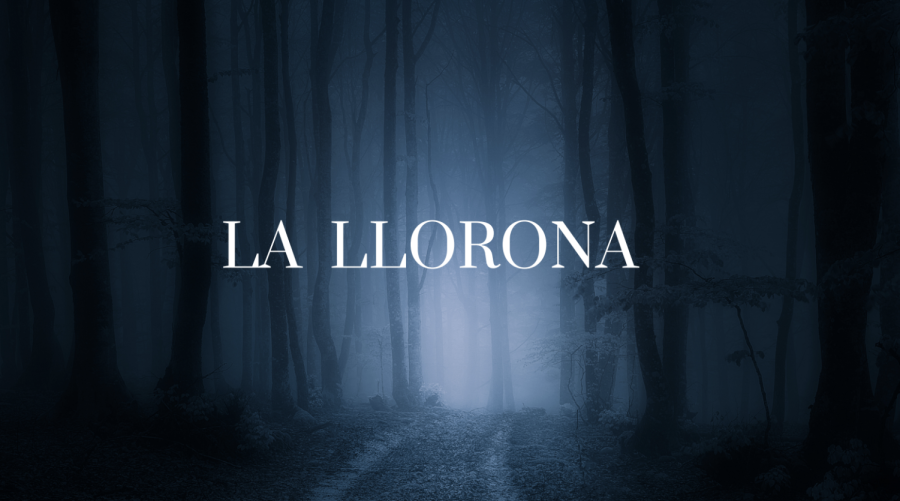LA LLORONA
Mis niños, ¿dónde están mis niños? The origin of the legend of La Llorona.
Mis niños, ¿dónde están mis niños? Most Mexican children grow up knowing not to go outside after dark, especially not near a river. It’s common knowledge for a lot of us. Why? Because a legend lies in our minds. A tingling sense runs up and down our spines when we stare into the night. This legend keeps us inside the house at night; we sit, staring out the window, the legend replaying in our minds. Don’t leave the house, she might be out there. The legend of La Llorona.
La Leyenda, The Legend
This legend varies depending on who tells the story and where. One person might tell you the legend one way, but move a couple of miles farther and the story might be different. However, they all start the same way. . . .
A beautiful young woman lived in a small village. She was so proud of her beauty, that she refused to marry any local man. One day, a handsome young man from a city arrived in her village, and she decided to marry him. Soon, they had two children, but the man started growing farther and farther apart from the woman. He starts traveling and only returns to visit and play with the children. To the woman’s surprise, the man came back with a different woman one day, and only to visit his children. Filled with greed, rage, and envy, the mother of the two children grabbed her children and threw them into a river. As soon as she throws them in, she regrets it and tries to run after them. She jumped into the lake after her children and died trying to find and save her children. It is said that she still roams the riverbank to this day, calling out to her children, saying, “Mis niñoooos. ¿Dónde están mis niños?” “My children. Where are my children?” And any child that hears that calling knows they must run, for if she catches you, she will drown you, just as she did her two children. “Mis niñoooos. ¿Dónde están mis niños?”
This legend is often told to Mexican (or at times other Latin-influenced) children and is often referred to (once the children get older) as a story to keep children from going outside after dark. In English, La Llorona translates to The Weeping Woman. Perhaps one of the scariest parts of the legend: no one knows where it truly originated from, but there are a few predictions.
According to History Today, “La Llorona is thought to be one of ten omens foretelling the Conquest of Mexico and has also been linked to Aztec goddesses.” The first Aztec goddess is Ciuacoatl, which is described as a beast who walks in a white dress, crying into the night. She is also known as an omen of war. Coatlicue is another goddess, who is thought to be linked to or the same person as Ciuacoatl, and is described as ugly/dirty. She waits for her son to return from war and cries for him while he is gone. And Chalchiuhtlicue is the goddess of the waters and elder sister to the goddess of the rain. She was said to be cruel and feared, and she would often turn over boats or drown people. The legend of La Llorona could have easily originated from either of these goddesses; however, no one has yet found out exactly when, where, or how this legend was made. La Llorona could also be linked to other myths and legends, such as the Banshee.
Evolution
Throughout the more recent years, La Llorona has grown to be more known among different cultures, not only primarily Mexicans and Chicanos. Different plays had been made in the mid-to-late 1900s, and eventually, in 2019, a film titled The Curse of La Llorona was released on the “big screens.” There were many different reactions to this horror movie, but overall it was successful and helped tell the legend to those who might not have grown up hearing it.
The Importance of Legends and Myths
When I asked iUP Owls about their view of whether legends and myths are well-preserved, they said that some myths are well-known, but others can be ignored due to other distractions that we have nowadays, such as social media platforms. As one student says, “..not all myths are known now because, in the older times, myths were a form of entertainment, but now we have [online games] to entertain us.” 10’th grader Eve Bamber also says that “…I think there should definitely be more education on the stories that we come from!”
Myths and legends help children learn important lessons and morals. Telling these legends helps keep children entertained and engaged in what they are learning. Telling a story is much more effective than flat-out telling them a concept of life. The legend of La Llorona has been passed down from generation to generation, and it continues to thrive. Hopefully, with enough people to pass this story on, children will be able to look back at the past of this legend. Remember, don’t go outside when it’s dark; she calls out for her children, and if she finds you, it won’t end well. Mis niños, ¿dónde están mis niños?
Works Cited:
Fuller, A. (2017, October 31). The wailing woman. Retrieved May 26, 2022, from https://www.historytoday.com/miscellanies/wailing-woman#:~:text=The%20origins%20of%20the%20legend,been%20linked%20to%20Aztec%20goddesses.

Hey! My name is Yadiz, this is my fourth year at iUP and my fourth year at iHoot. My biggest passion is serving God, I play the drums for my worship youth...

Hello everyone! My name is Alessandra Gonzalez and I am an eleventh-grader at iUniversity Prep. This will be my 5th year attending online school. I love...







